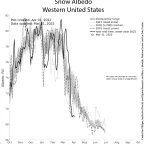Our Research
Related News & Stories

Arctic spring melt has begun. Ice extent declined most substantially in the Bering Sea and the Sea of Okhotsk. Overall decline was slower than average through the month.

After reaching its seasonal maximum extent of 14.88 million square kilometers (5.75 million square miles) on February 25, the seasonal decline in Arctic sea ice extent through March proceeded in fits and starts.

To help uphold Indigenous data sovereignty, Noor Johnson and Matt Druckenmiller from the Exchange for Local Observations of the Arctic (ELOKA) met with community observers, advisors, and staff from the Alaska Arctic Observatory & Kno
Arctic sea ice has likely reached its maximum extent for the year, at 14.88 million square kilometers (5.75 million square miles) on February 25. The 2022 maximum is the tenth lowest in the 44-year satellite record.